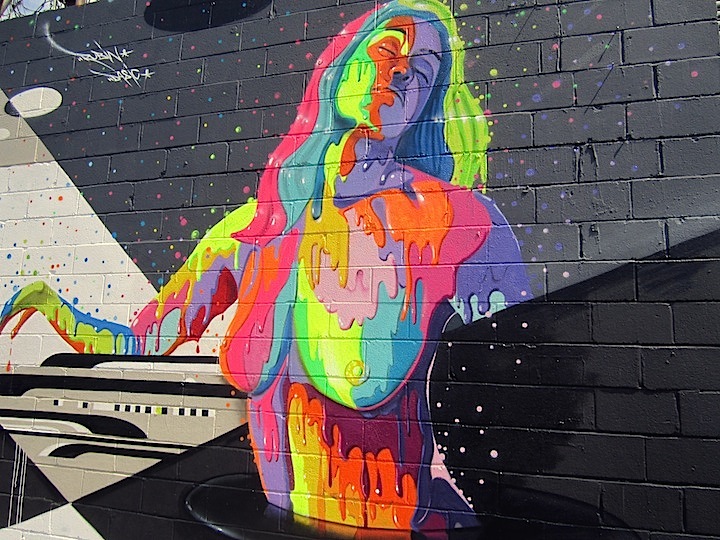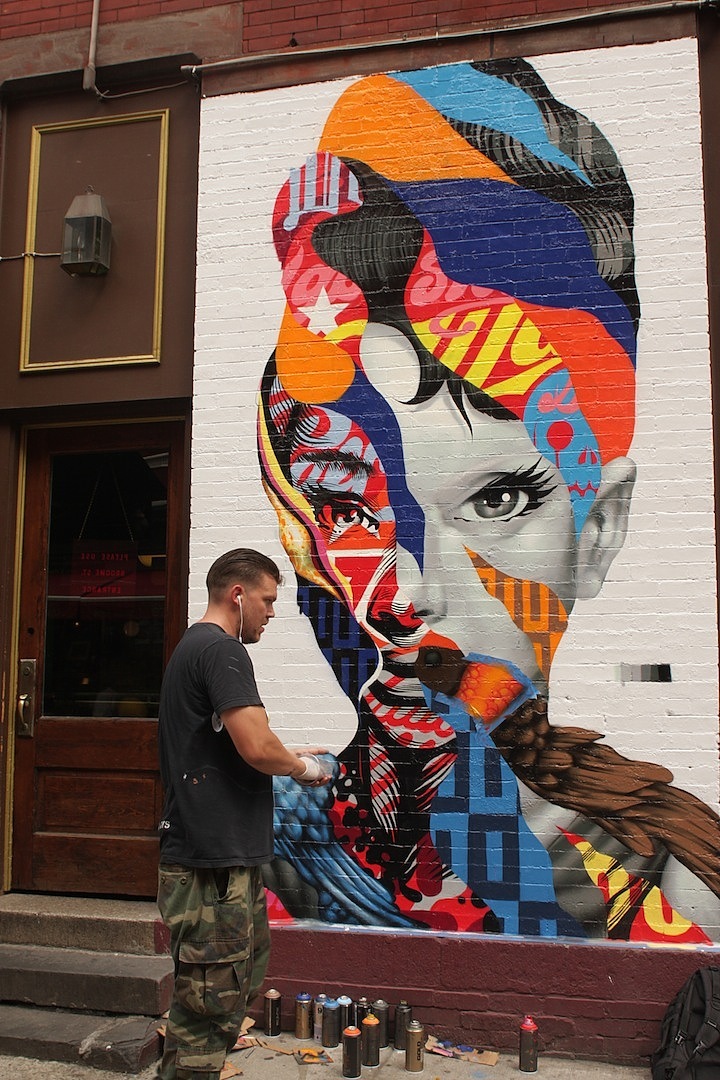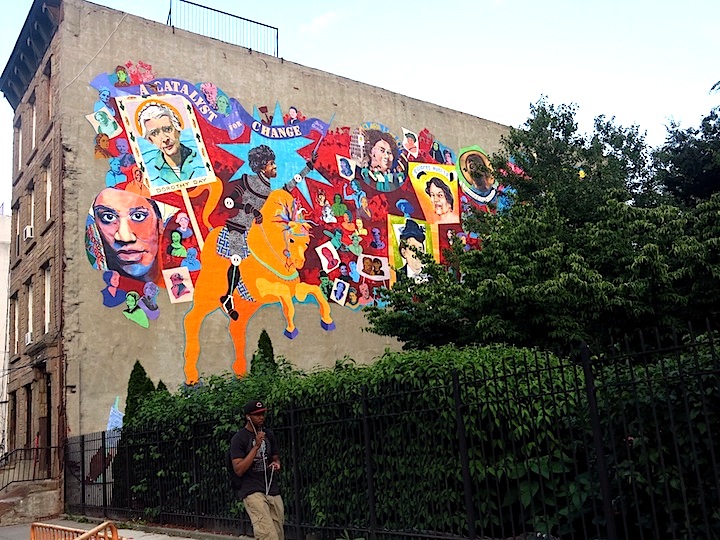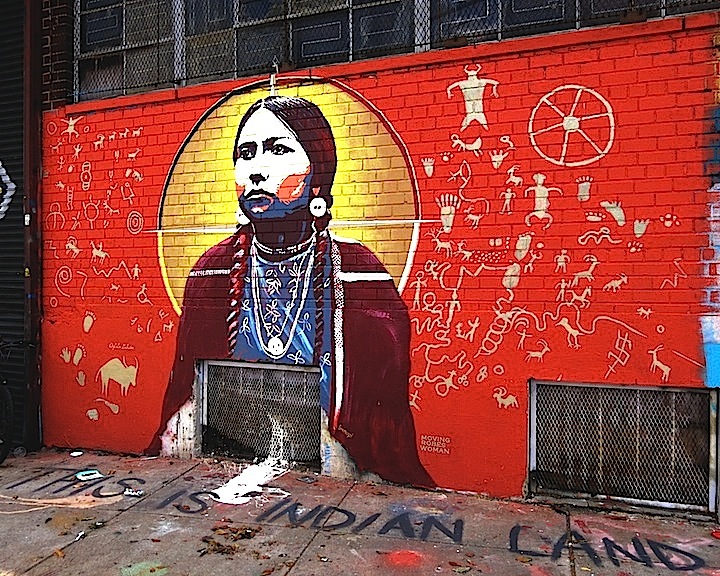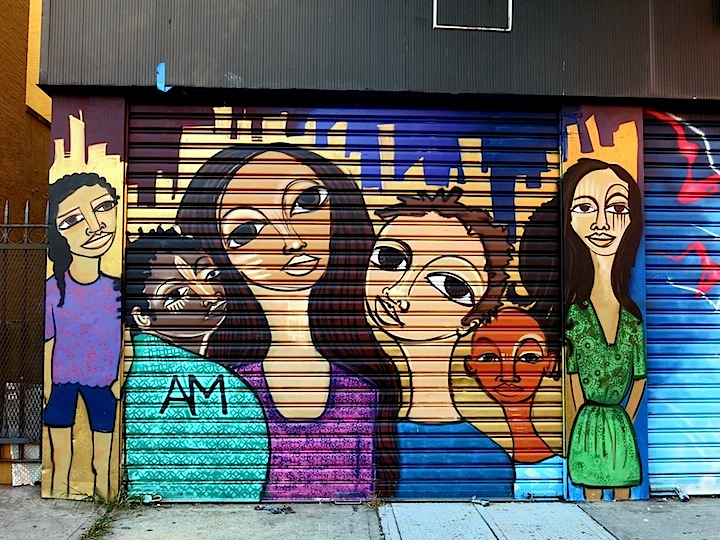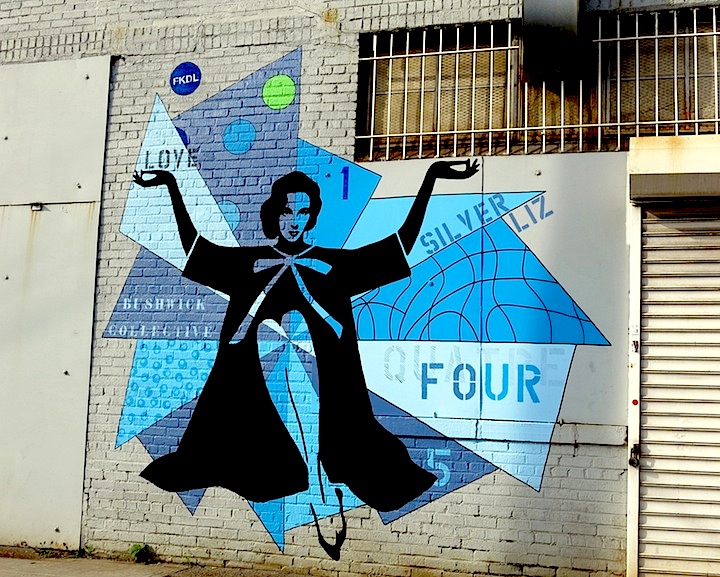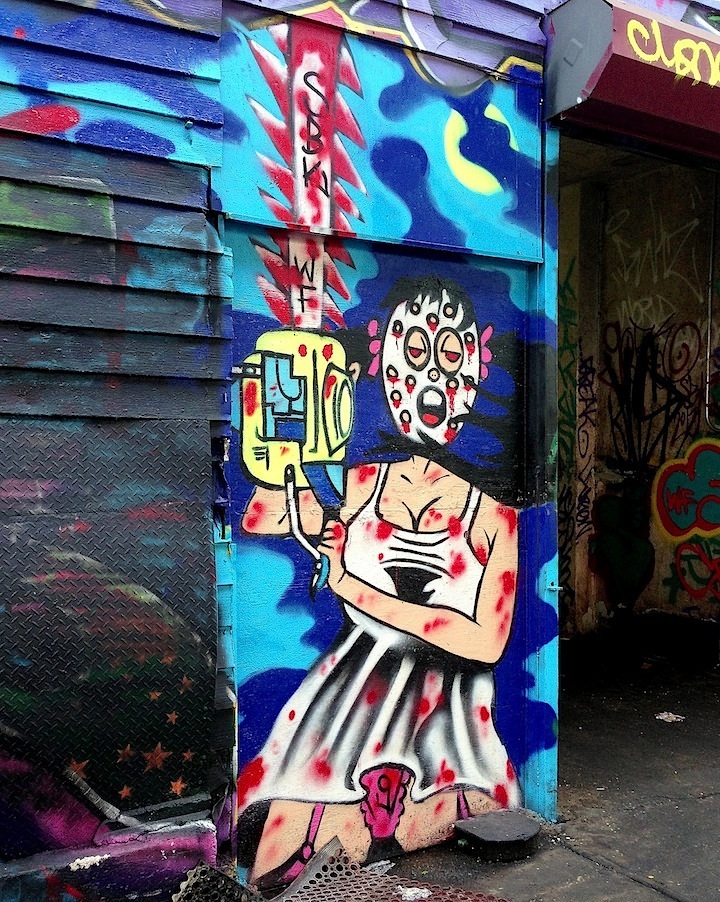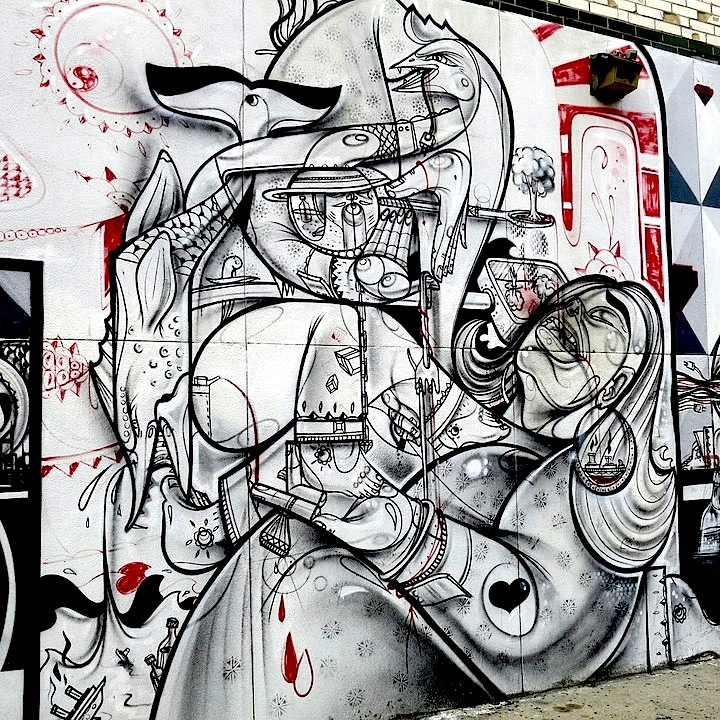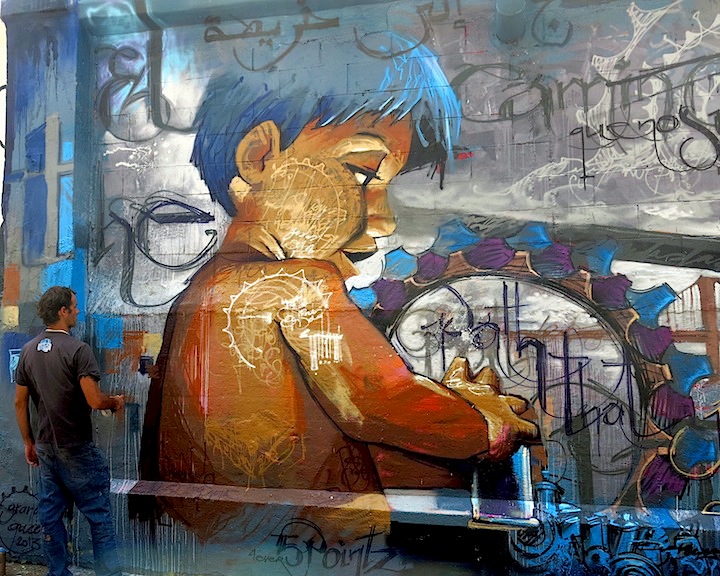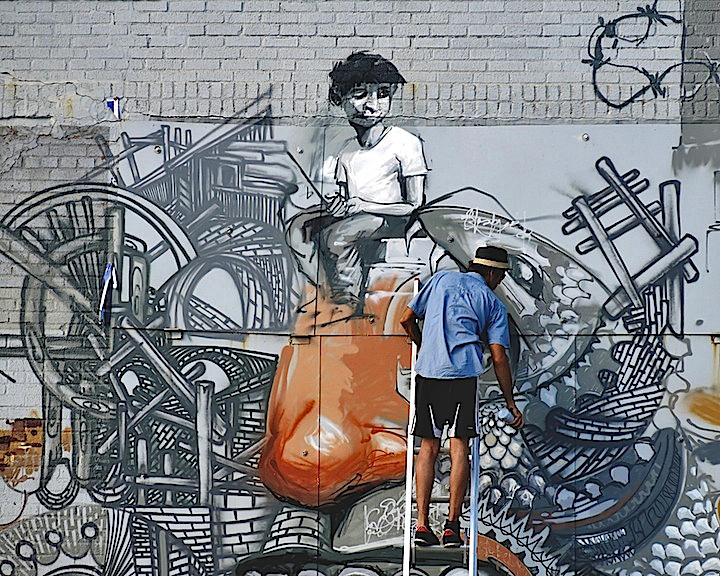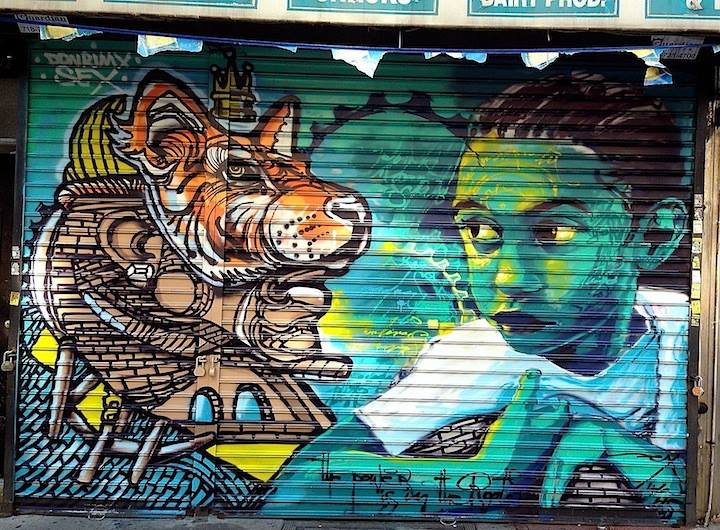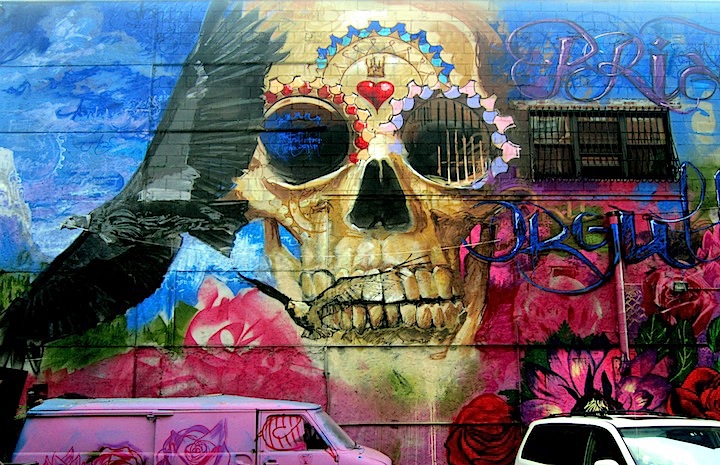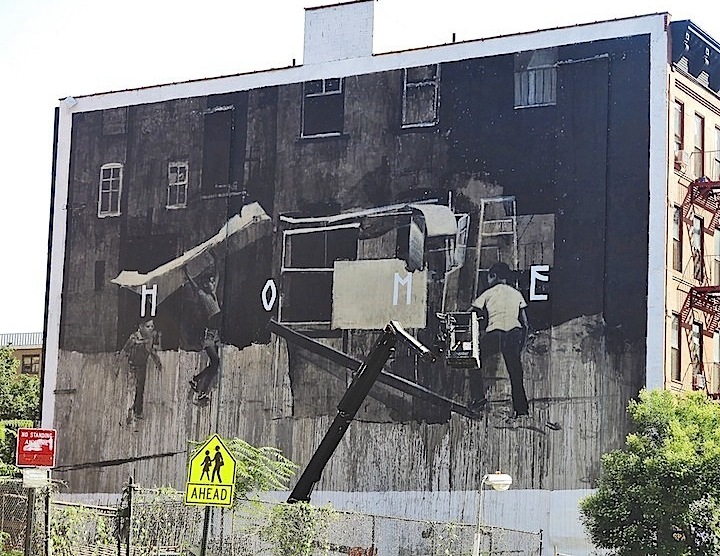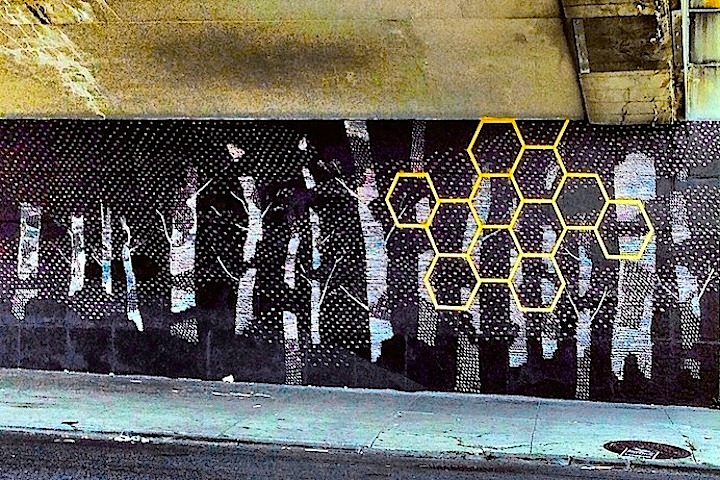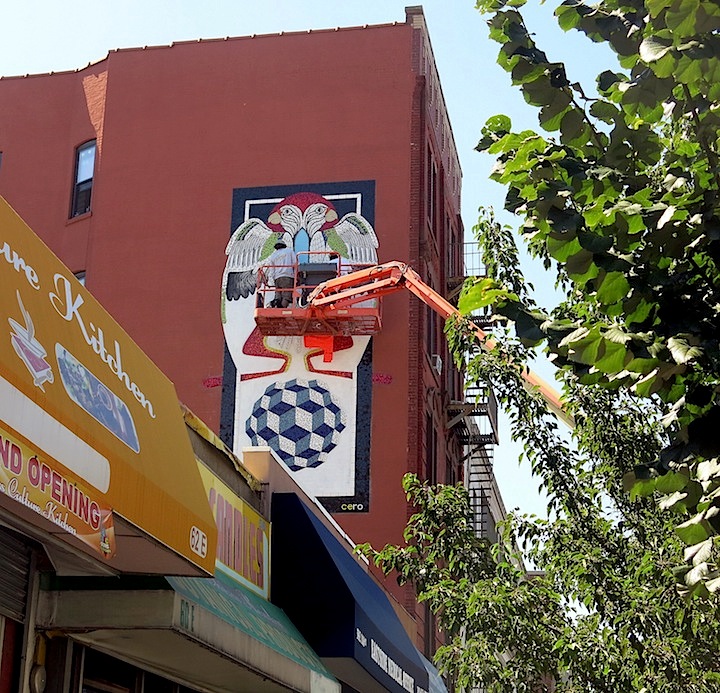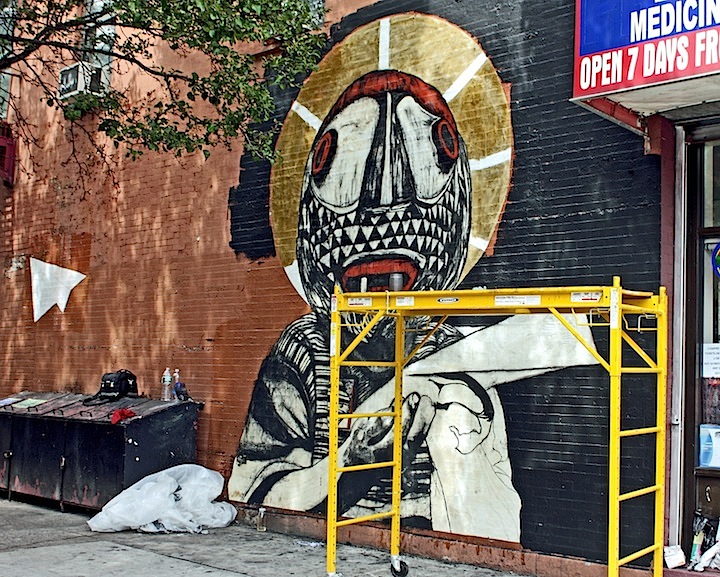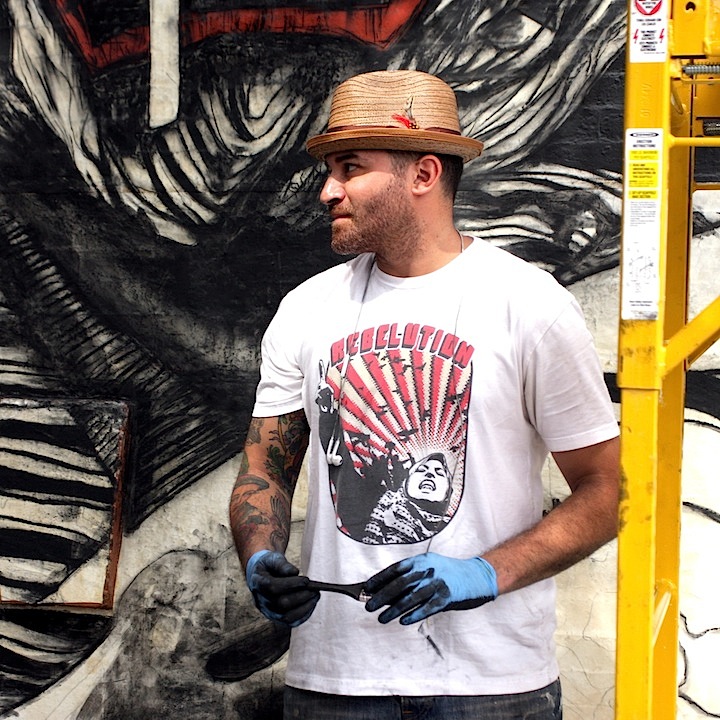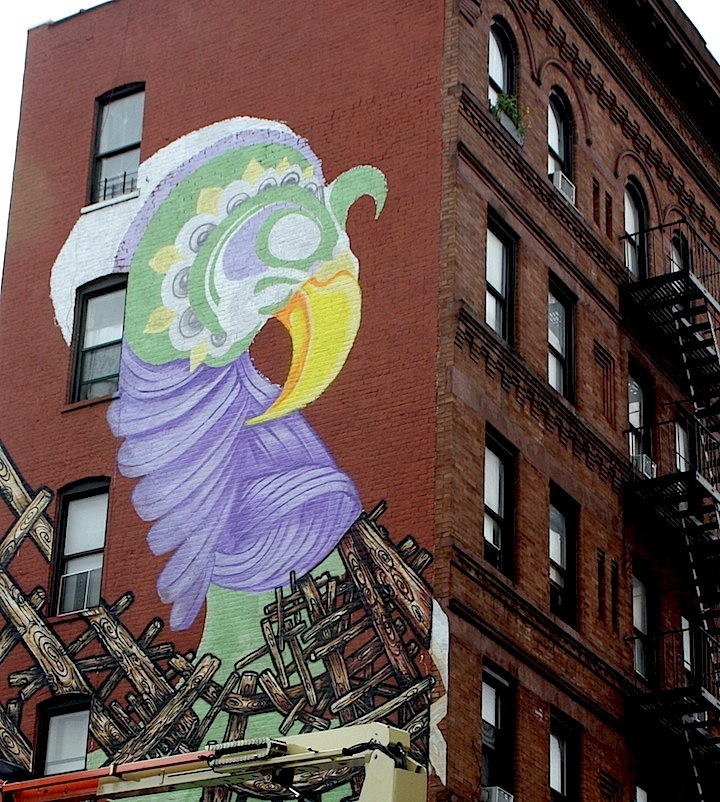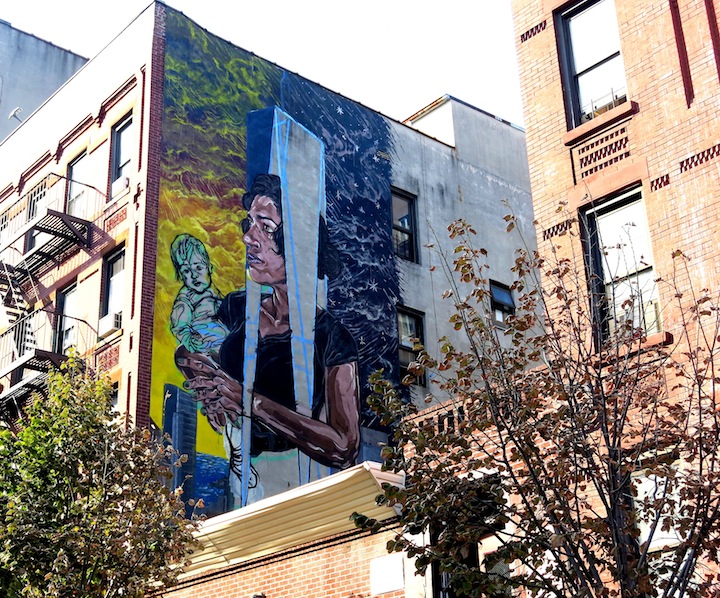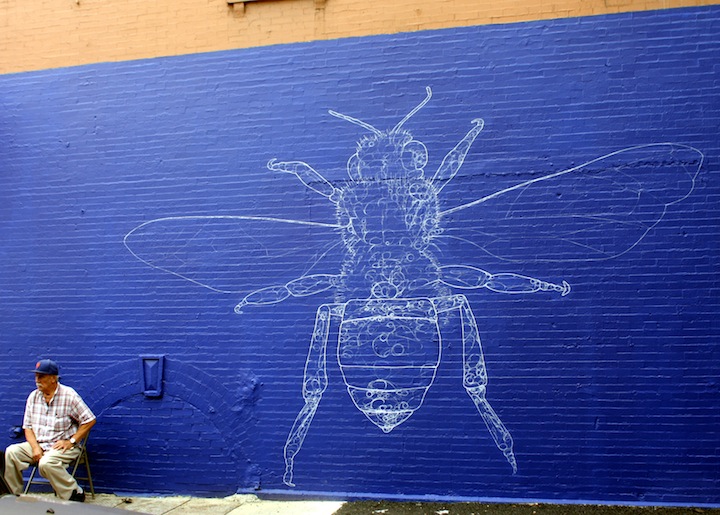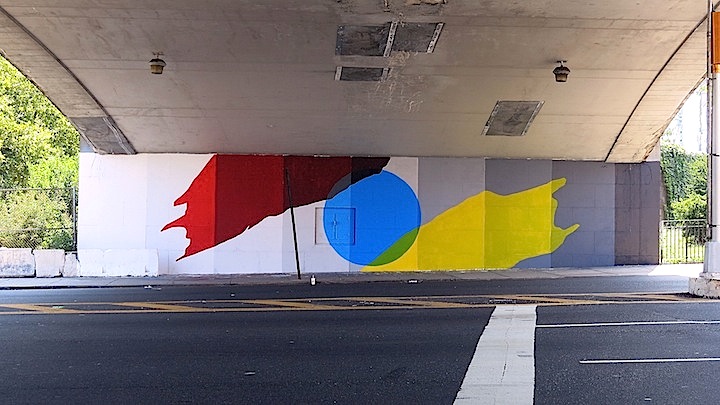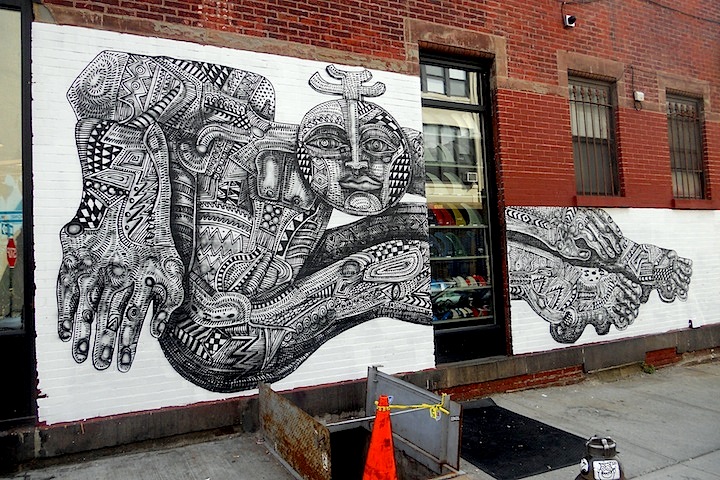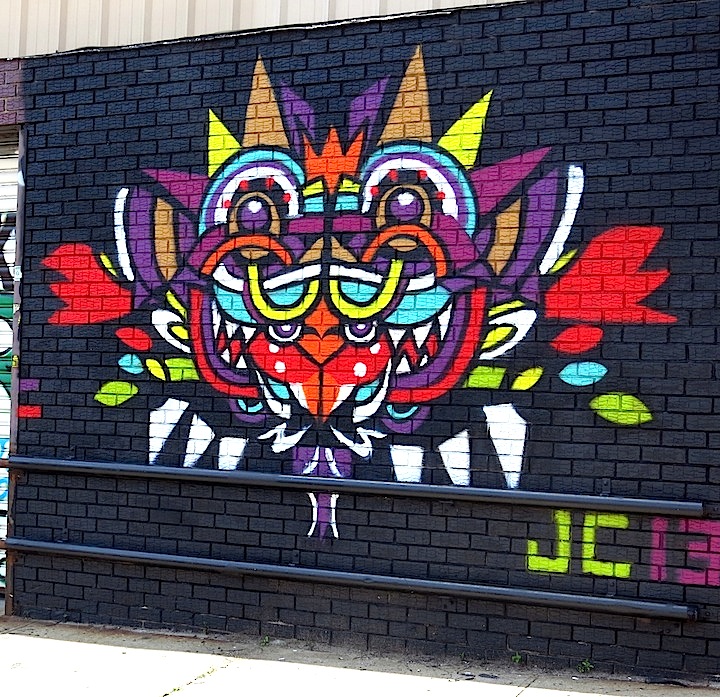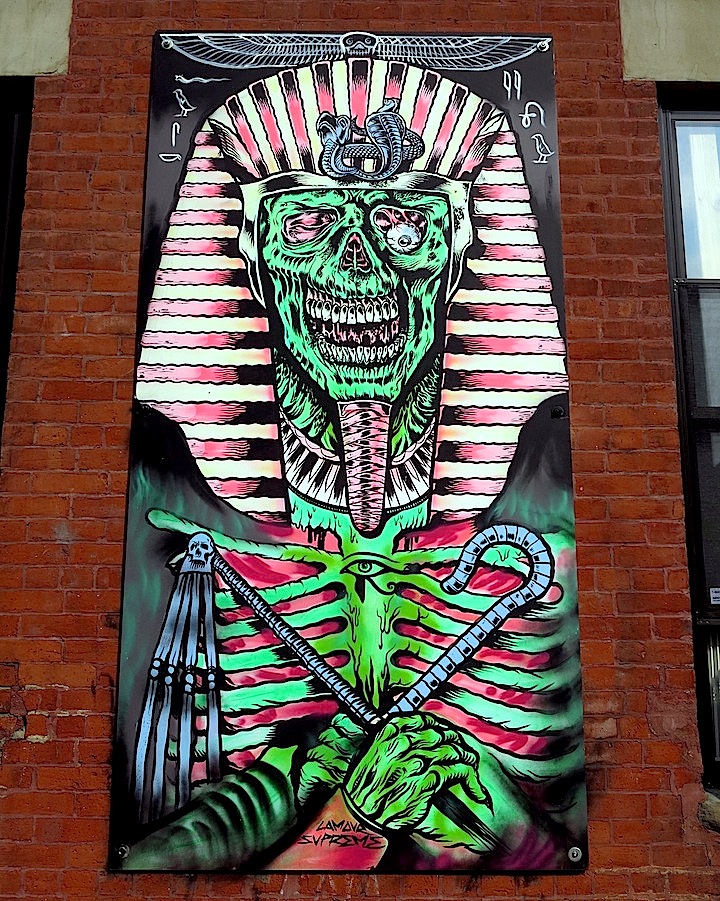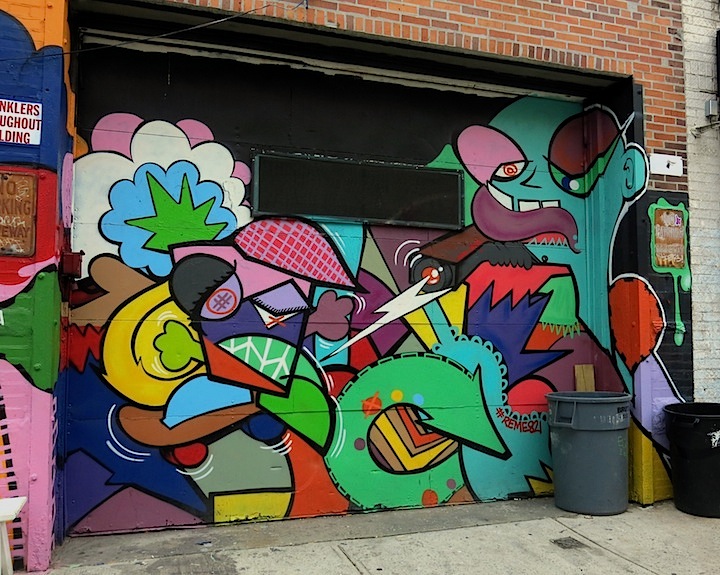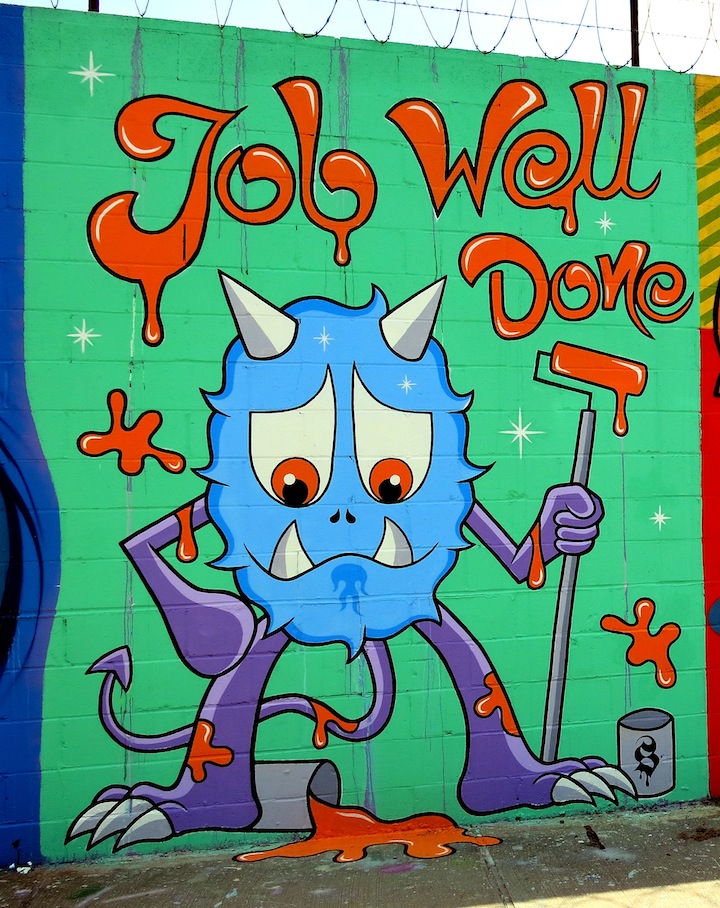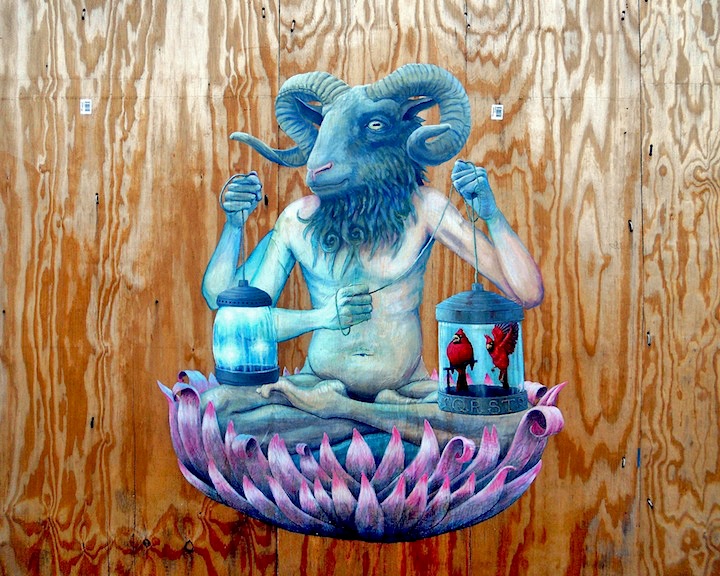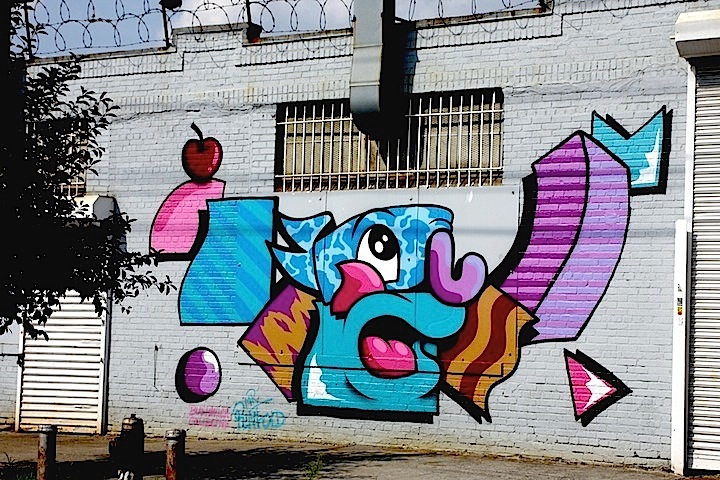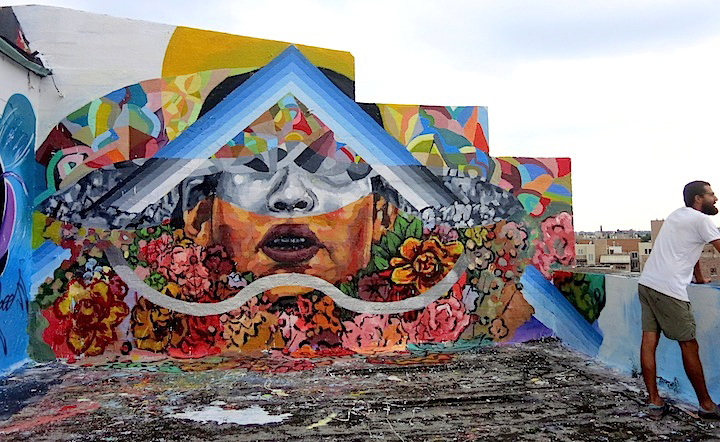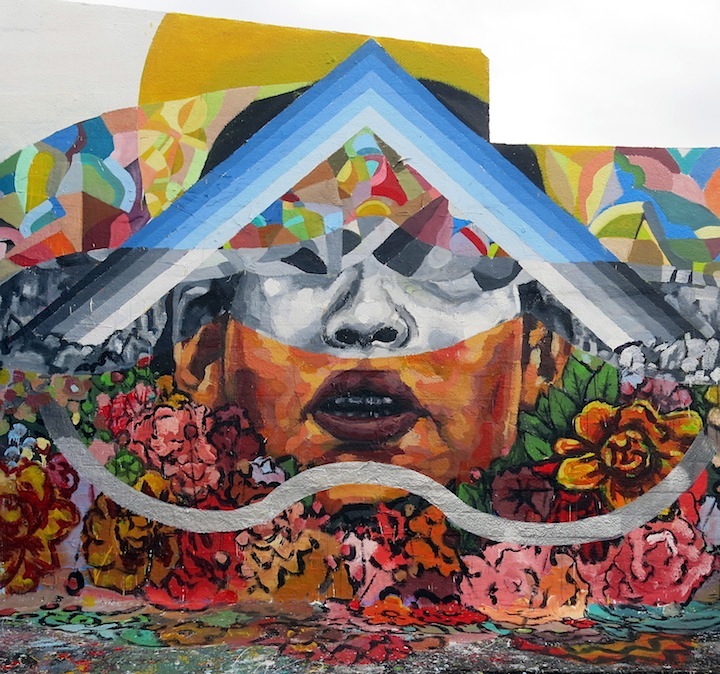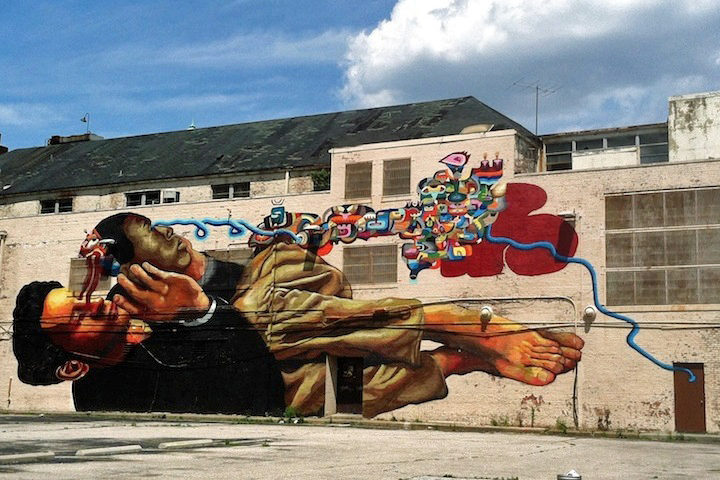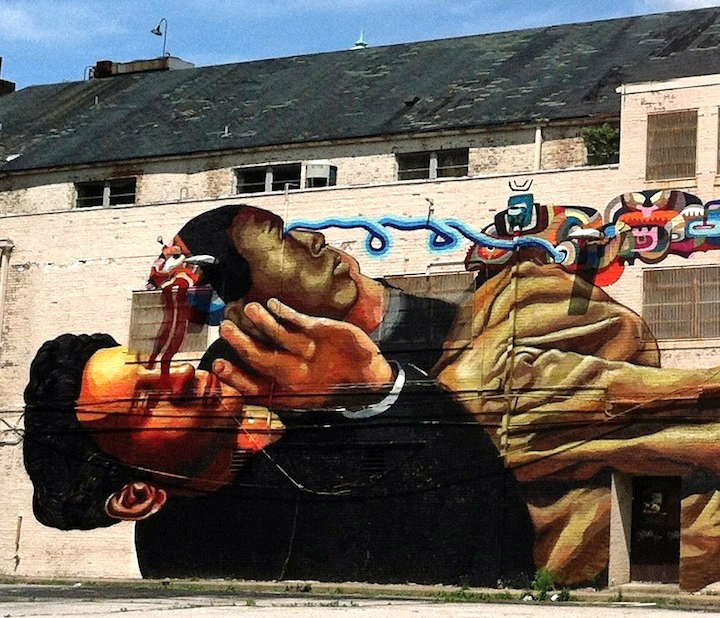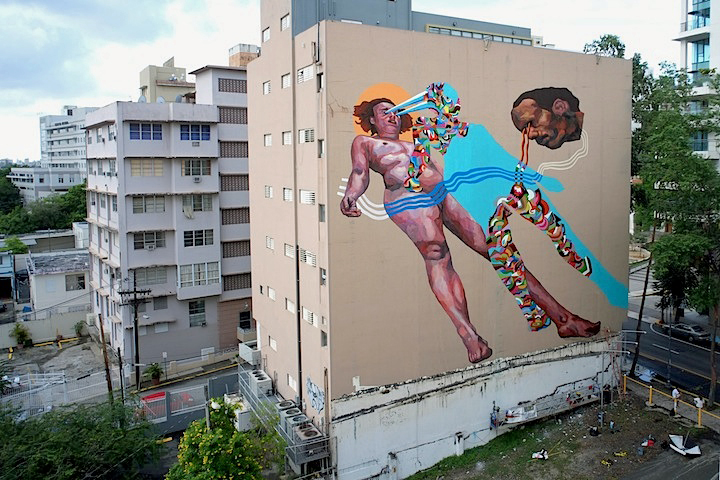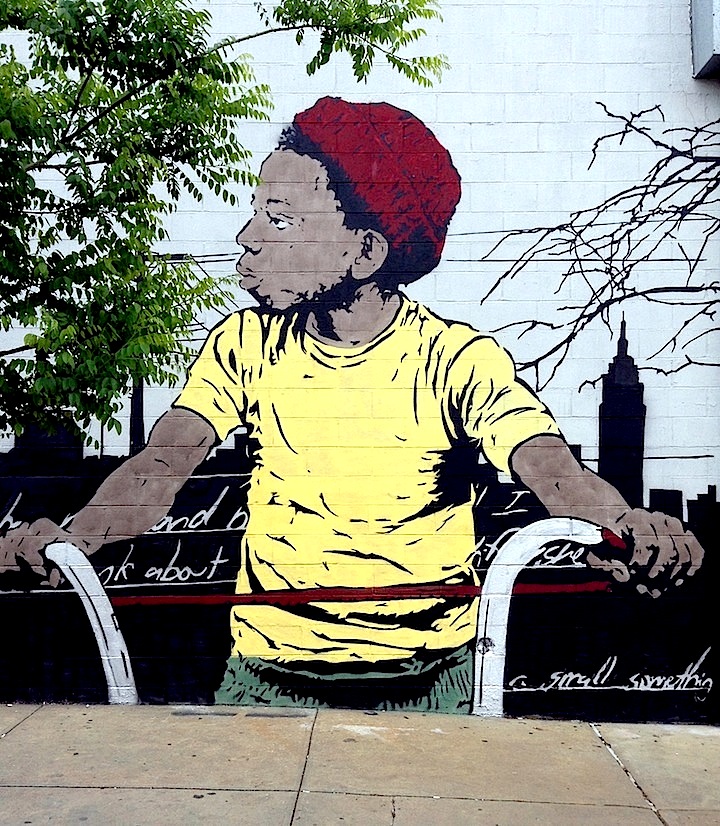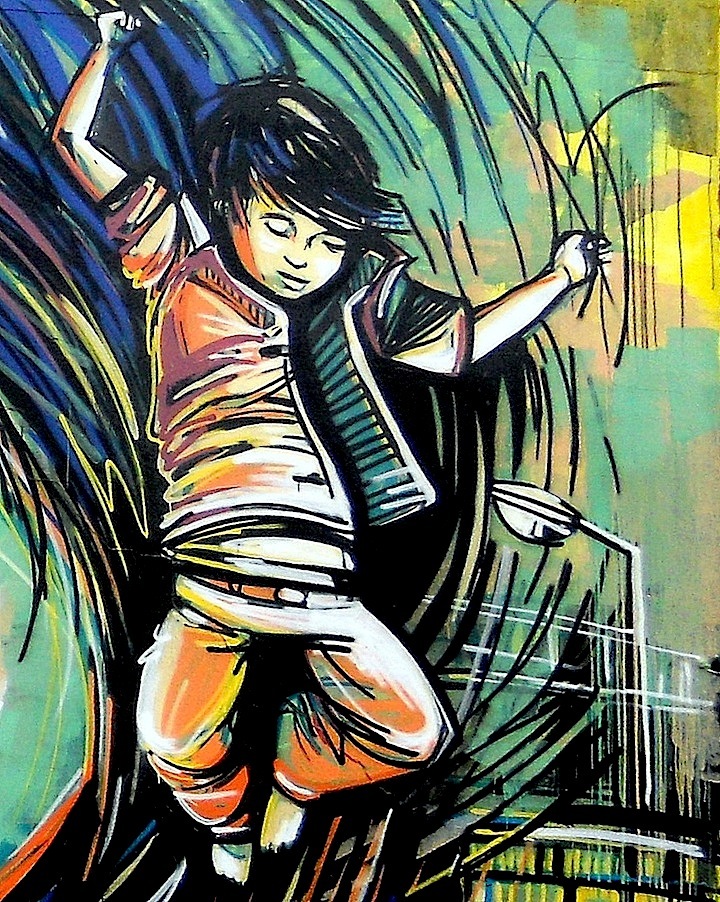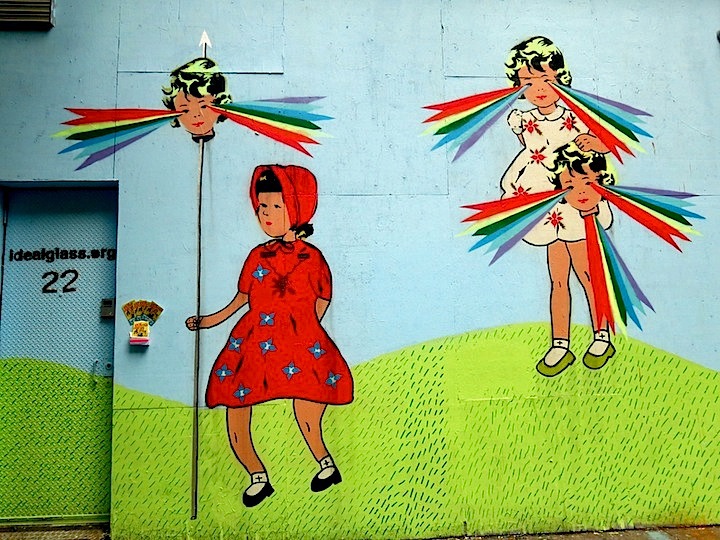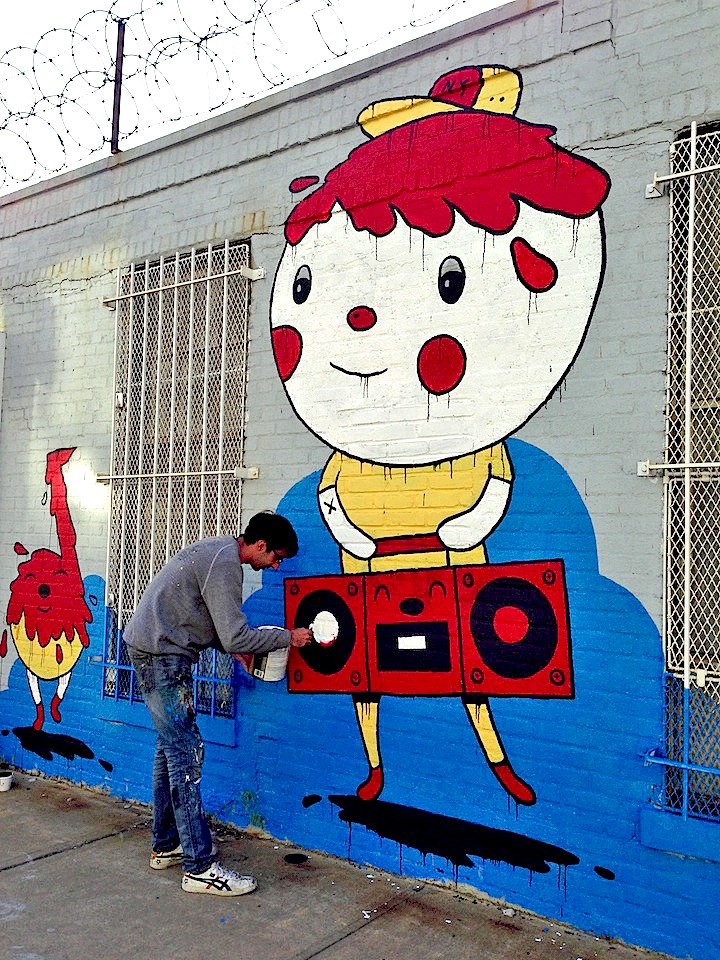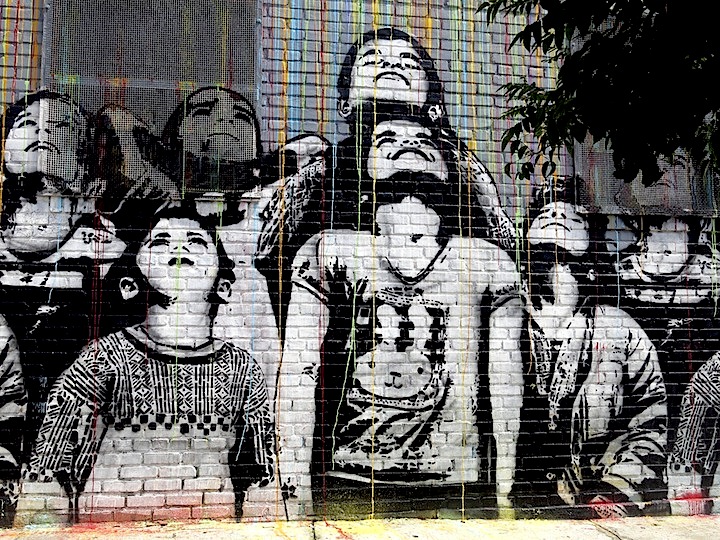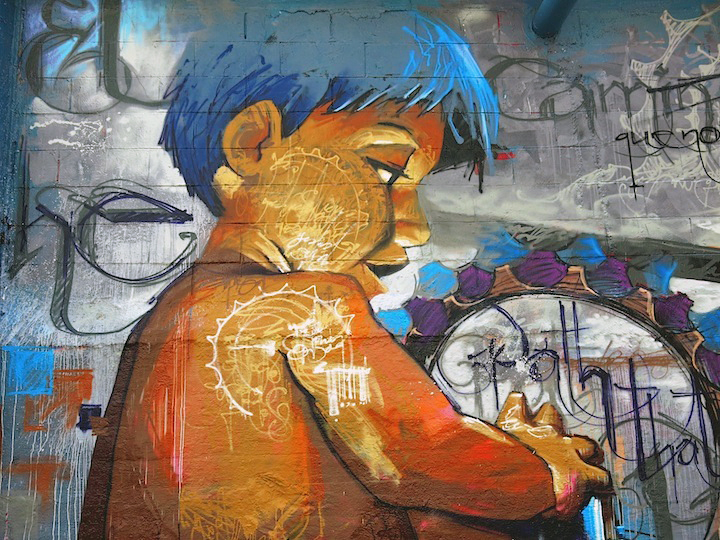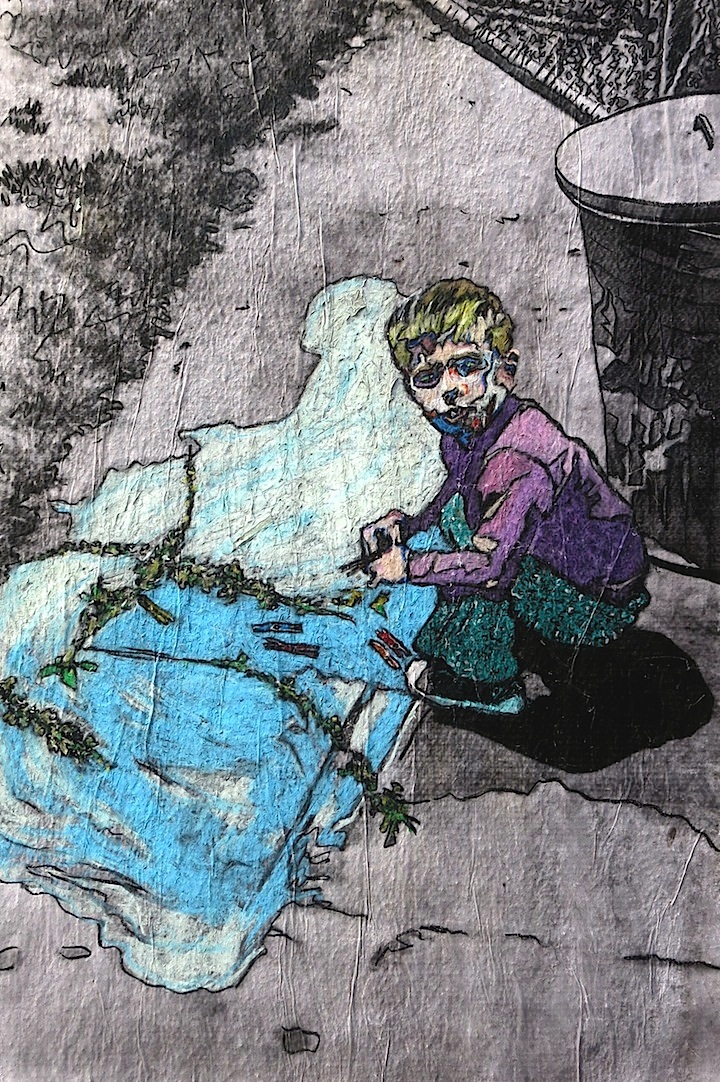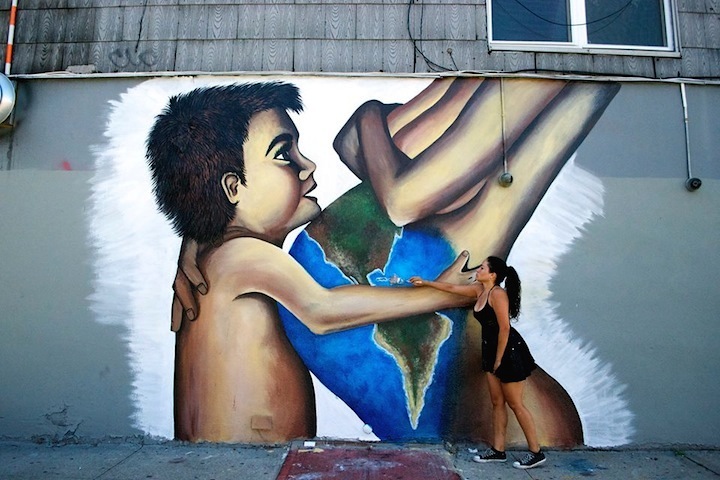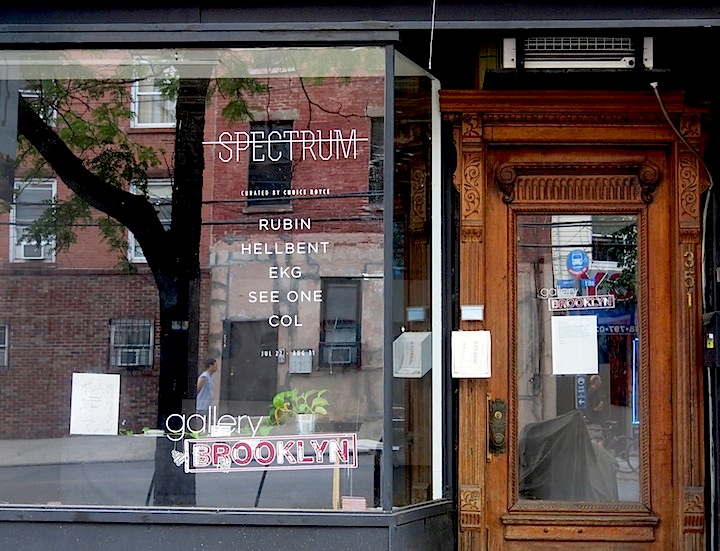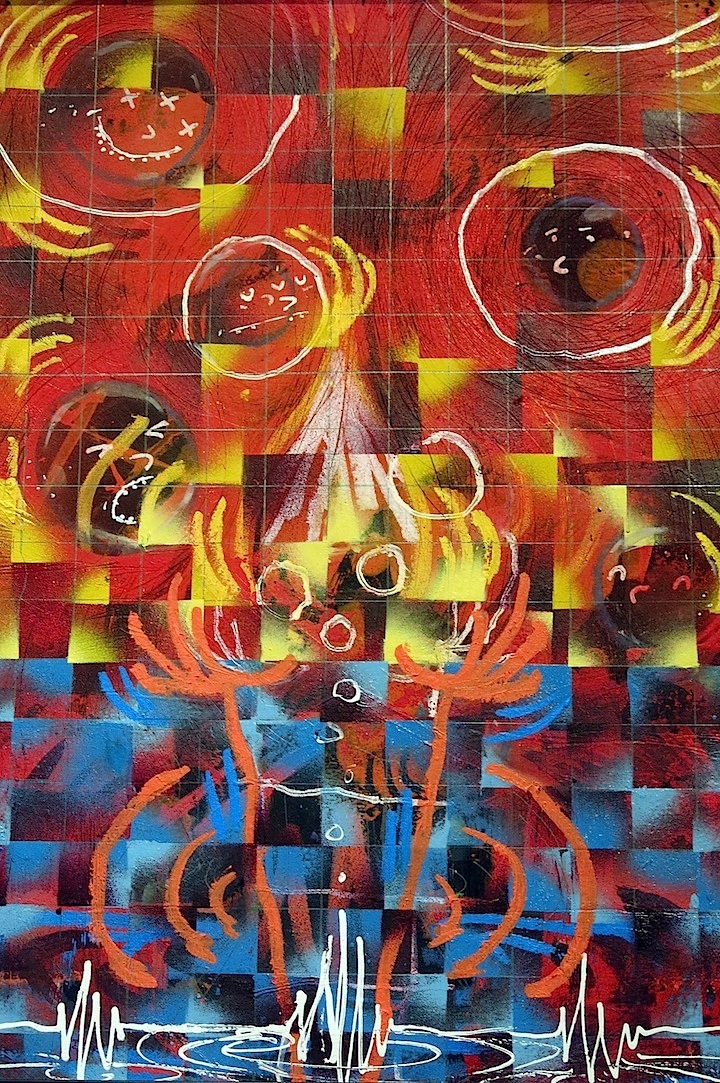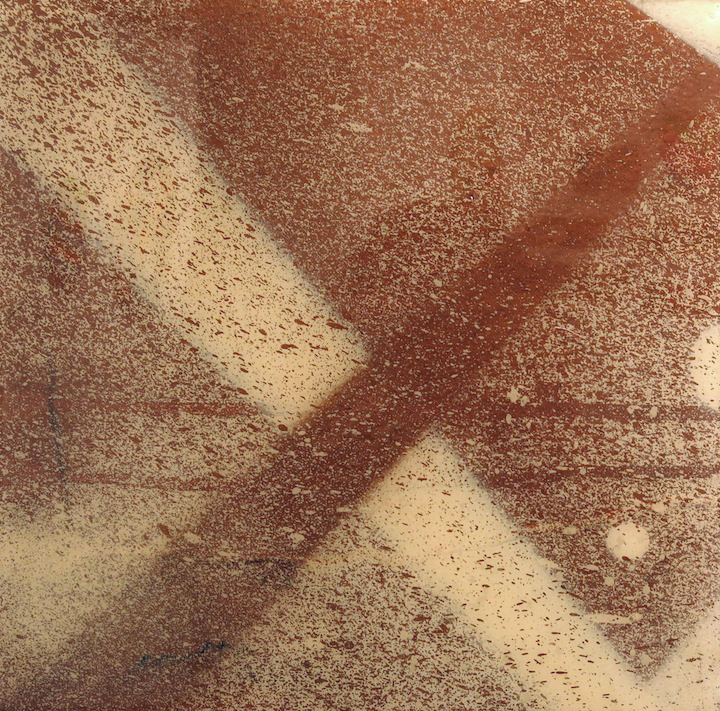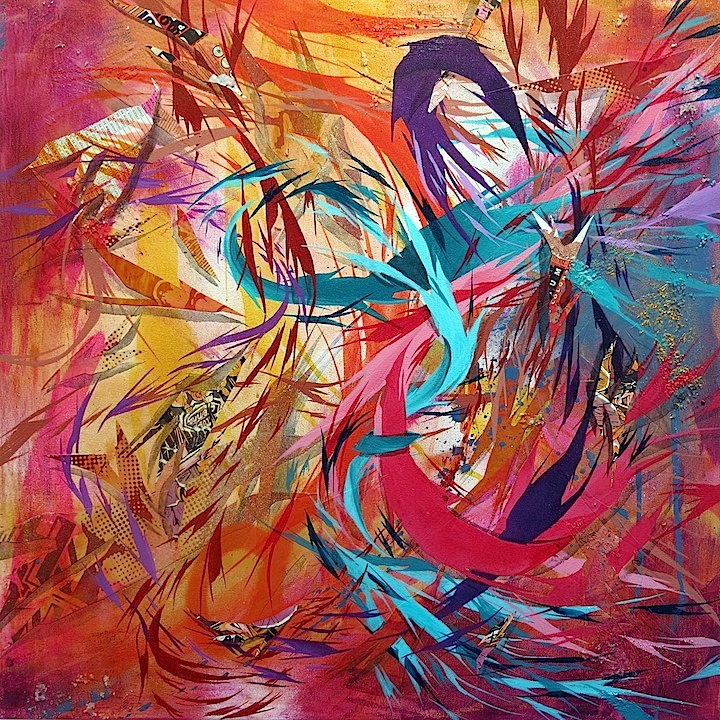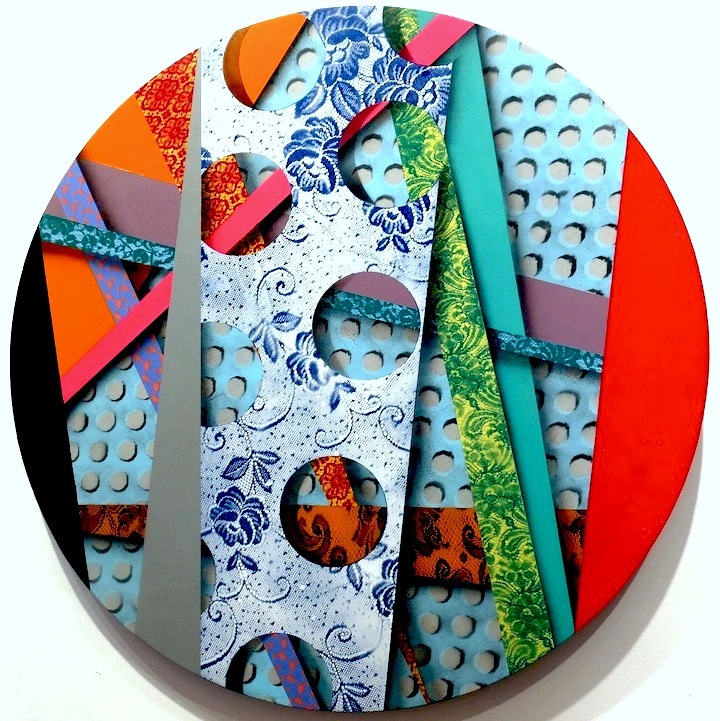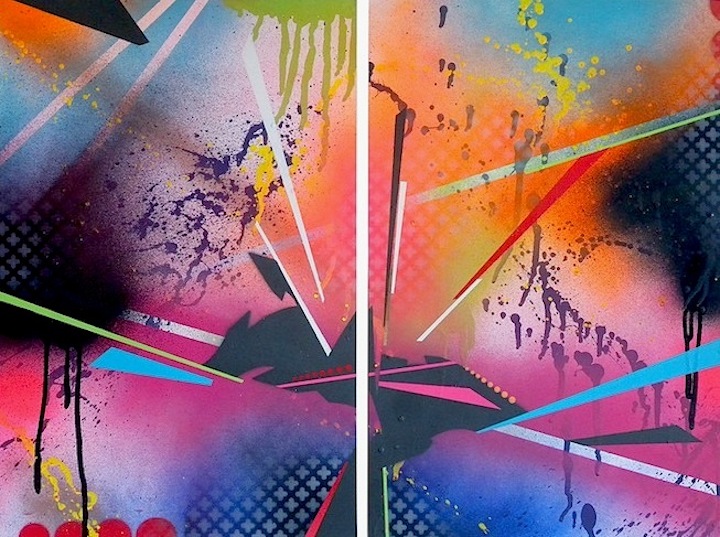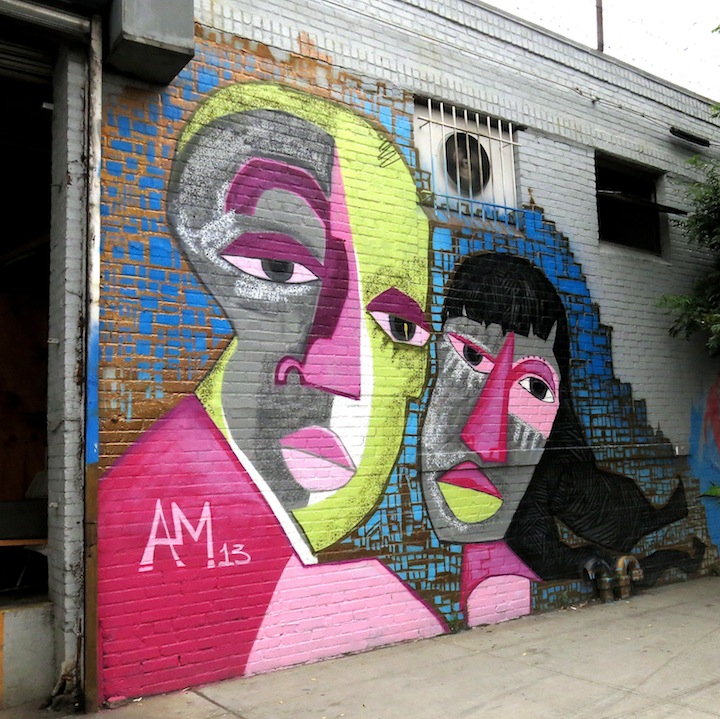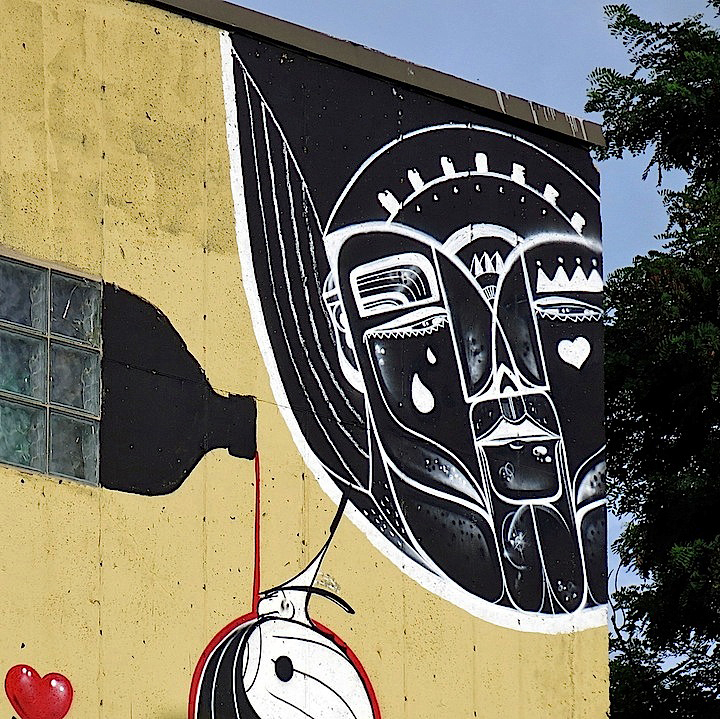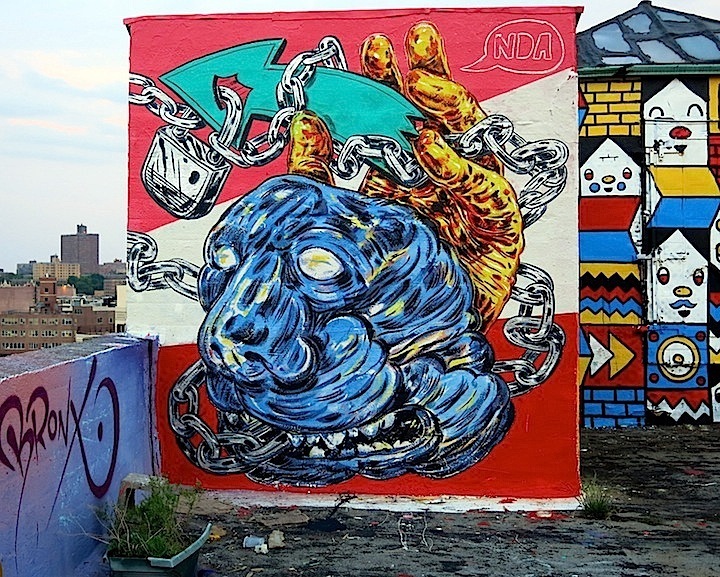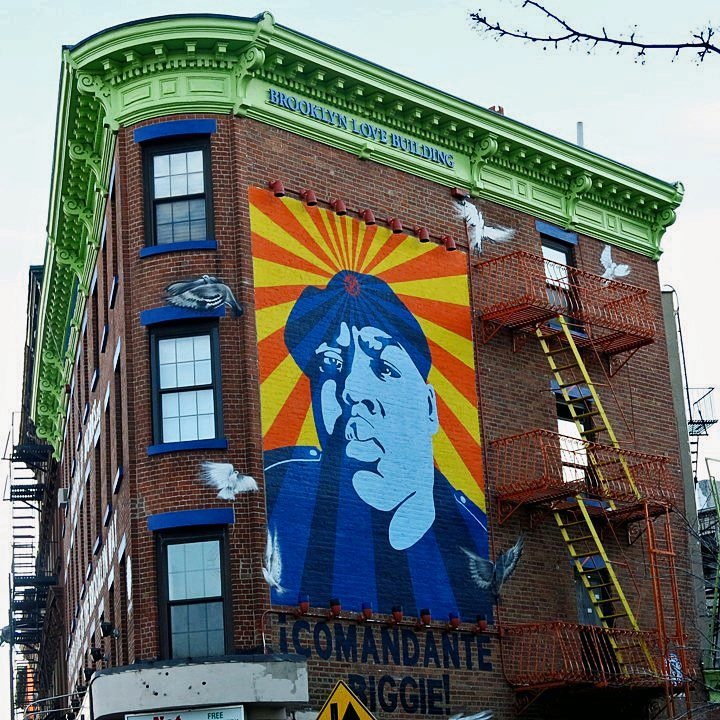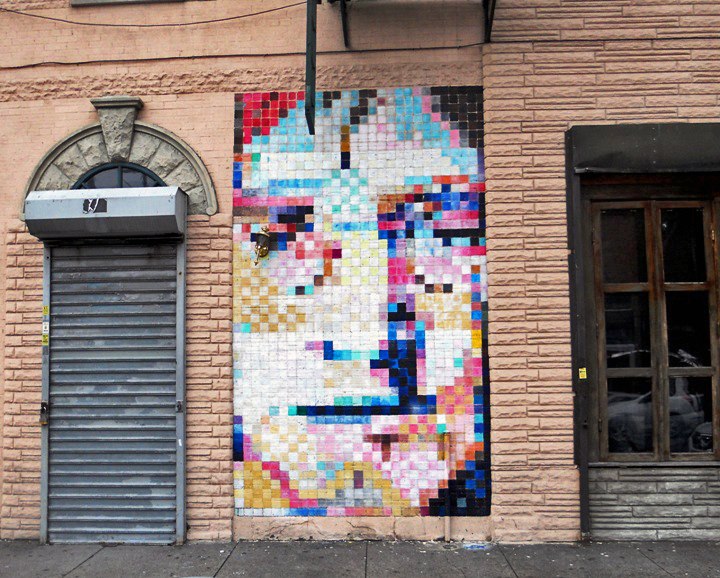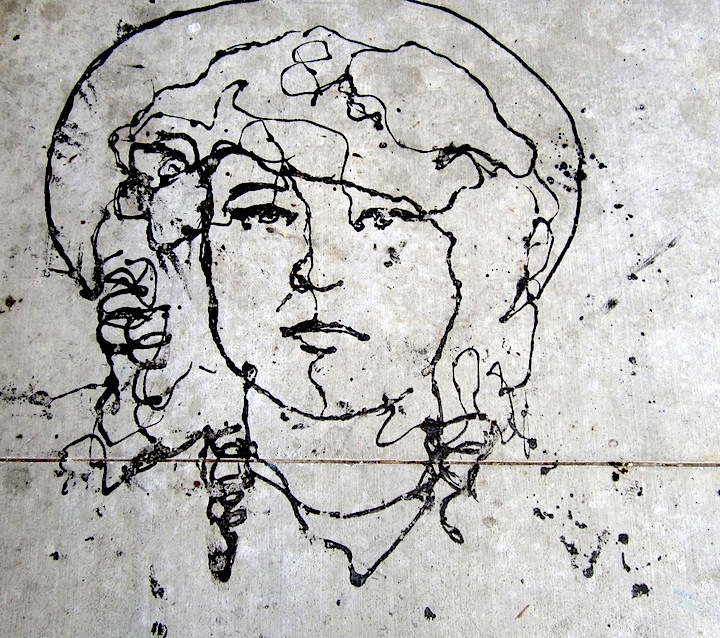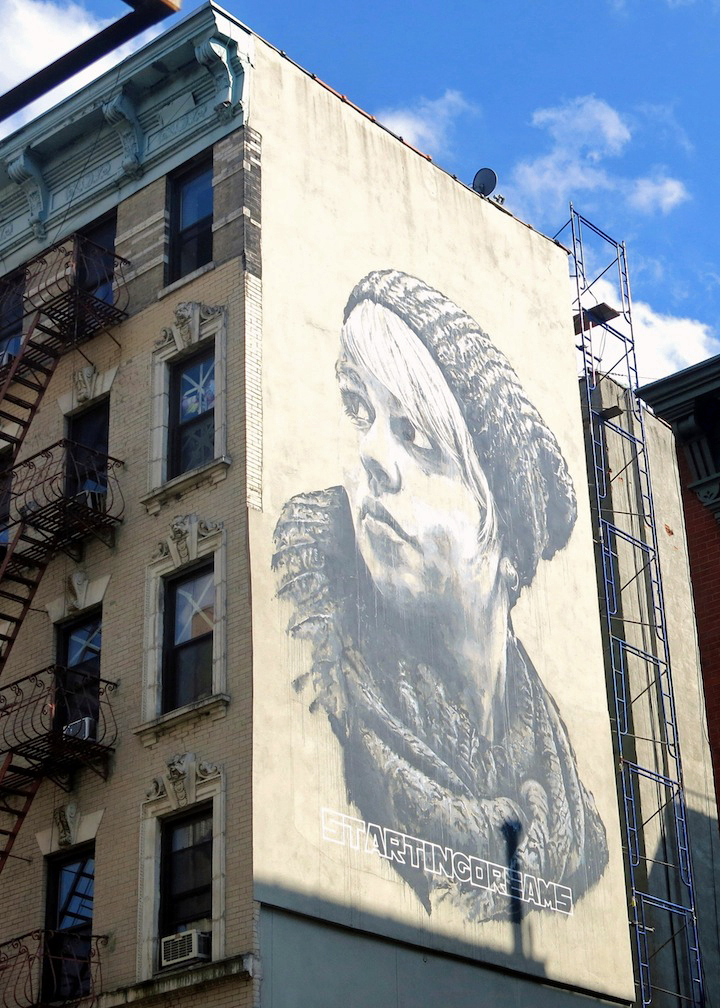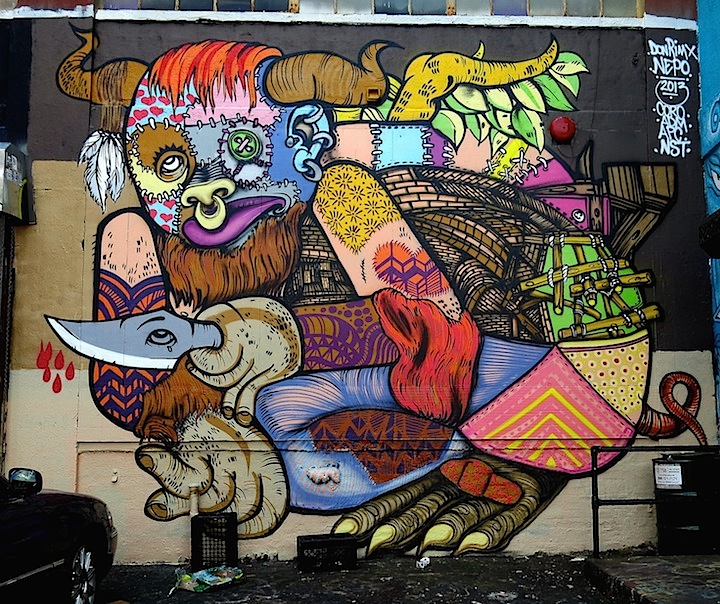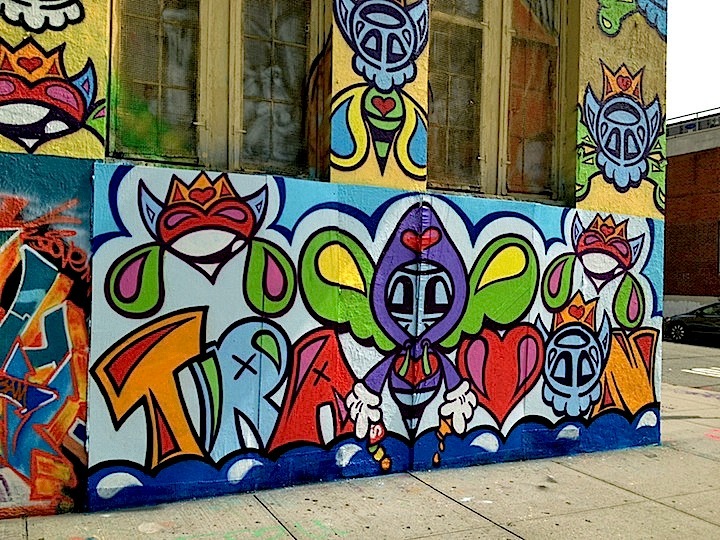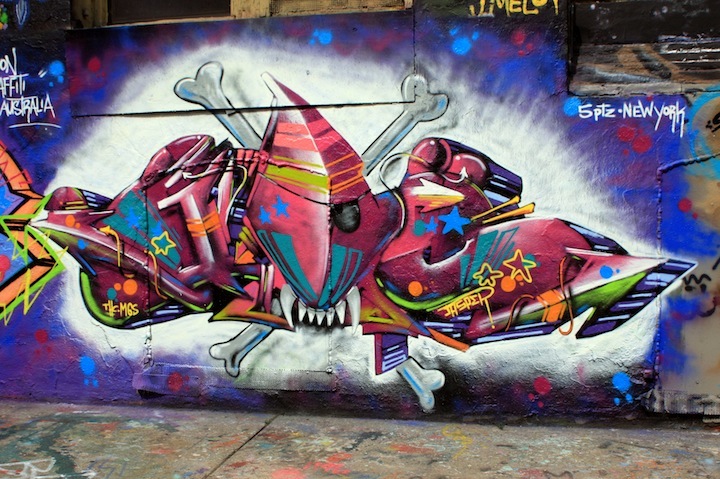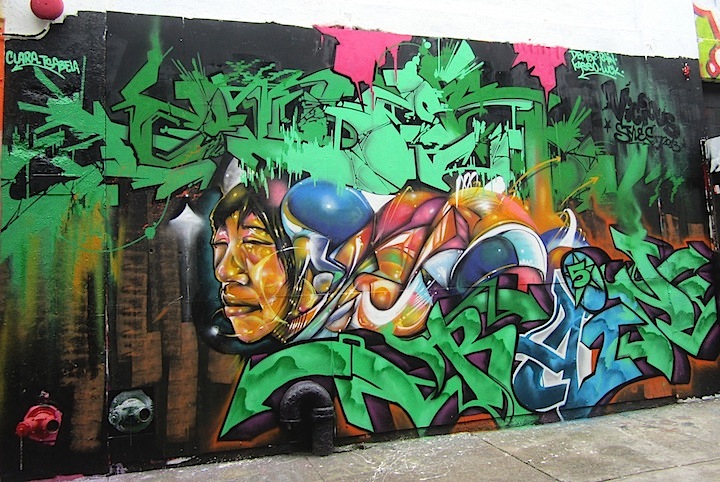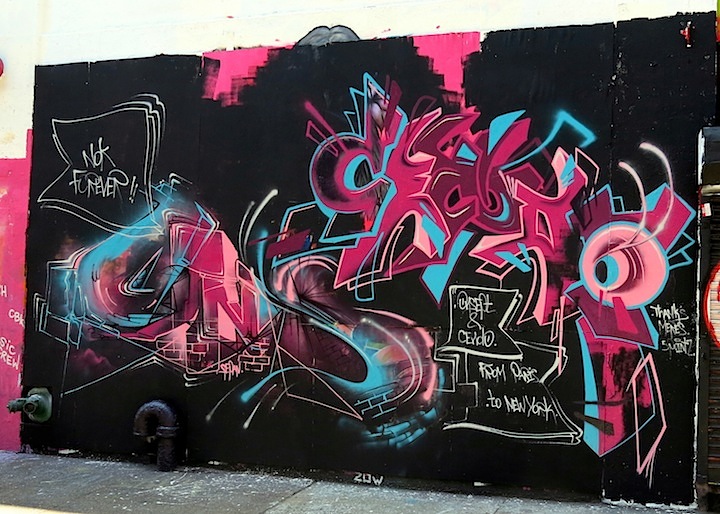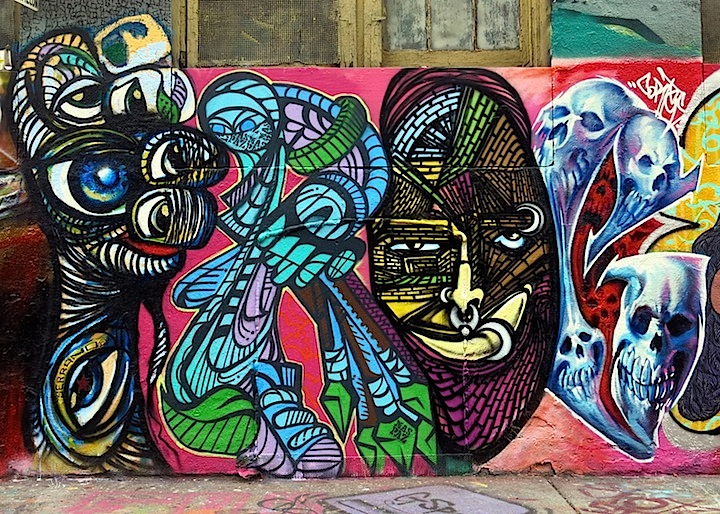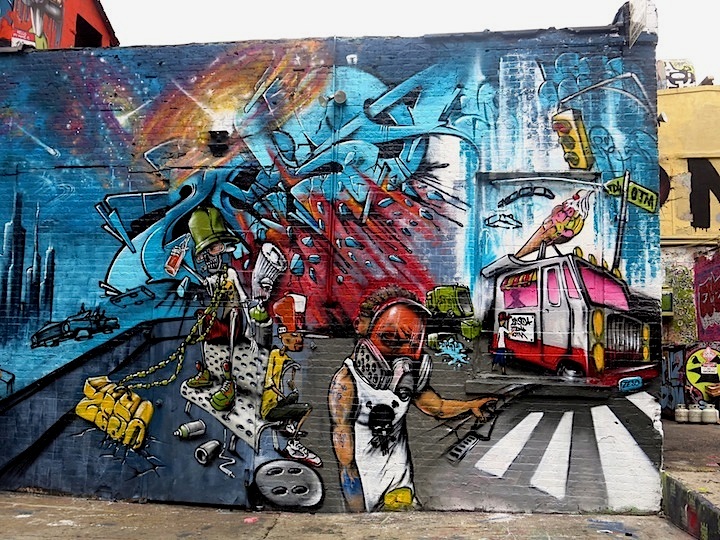Currently based in Brooklyn, Chicago native Esteban del Valle is an interdisciplinary artist whose public artworks have surfaced in NYC, as well as in Chicago, IL, San Antonio, TX, and Kansas City, MO. We first came upon his extraordinary work at 5Pointz in Long Island City, Queens.
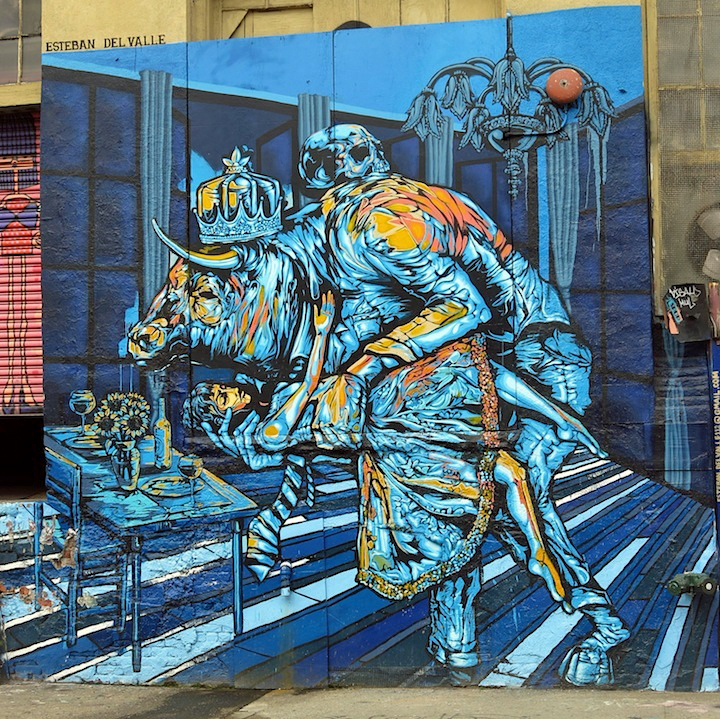
When and where did first get up?
I was in junior high school back in Chicago when I did my first tag on a school bench. I was soon hitting the back of K-Mart and piecing under nearby bridges.
What inspired you to hit the streets? Have you any early graffiti memories?
I was in sixth grade when I saw a legal wall in Chicago’s Ukrainian Village that was all graffiti. I thought, “Wow! I want to do something like that!”
Back in Chicago, did you paint alone or were you part of a crew?
Both. Just about all the guys I went to school with were into hip-hop. We called ourselves FYM (Free Your Mind).
What percentage of your time these days is devoted to art?
120%
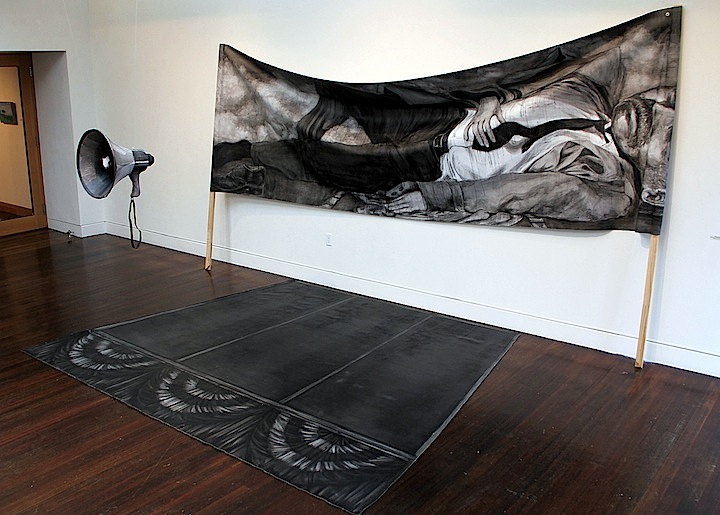
Is art, then, the main source of your income?
Yes, I sell studio work. I do commissions and I work for Groundswell, an organization that engages youth in creating community murals.
How does your family feel about what you are doing?
They’re fine as long as what I do is legal.
Any thoughts about the graffiti/street art divide?
I love both. But what I especially love about street art is that it inspires people to take to the streets to do more than just their names.
How do you feel about the movement of street art and graffiti into galleries?
It’s fine. Artists need to make a living from their work. But once it’s in a gallery, it isn’t “street art” any more.
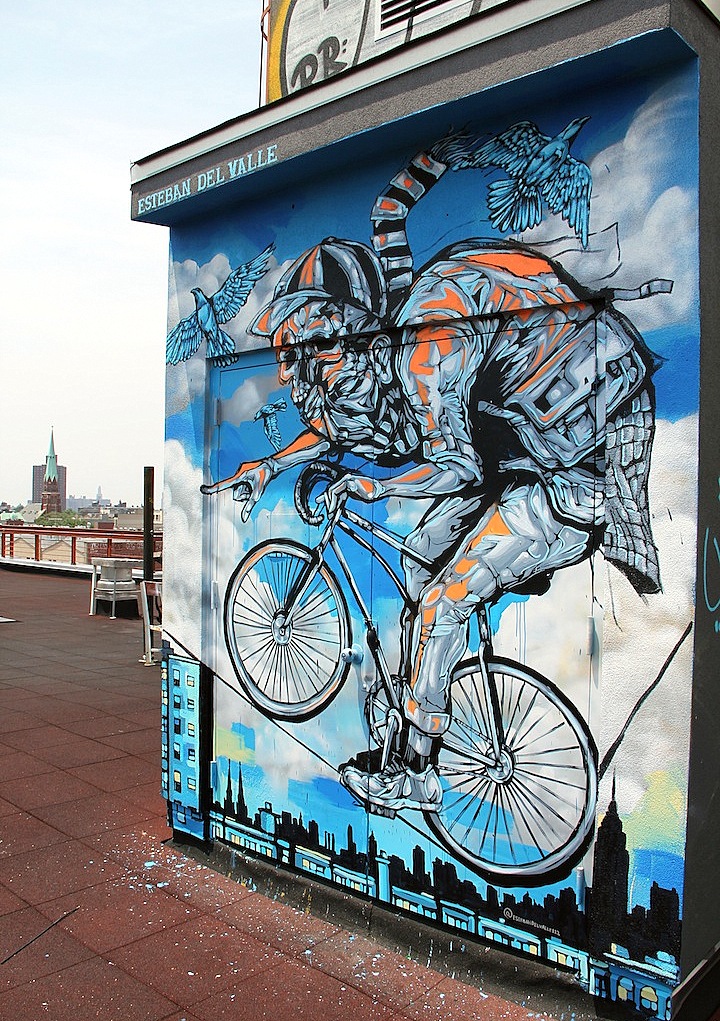
Why do you suppose graffiti is held in higher esteem in Europe than it is here in the States?
For the same reason public intellectuals are valued in Europe. There’s a greater appreciation of culture, in general. And the Europeans have different notions of public space.
How do you feel about the role of the Internet in all of this?
It’s great. It makes art accessible to so many.
Have you a formal art education?
I have a BFA in Art History and Painting from Southern Illinois University and a Masters Degree in Painting from the Rhode Island School of Design.
What inspires you these days?
Innovative music and performance art are my main inspirations. The Mars Volta and Geo Wyeth come to mind.
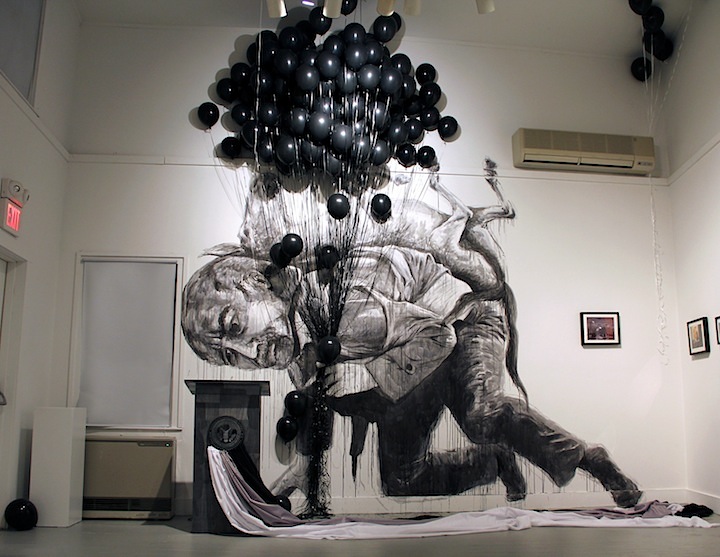
Are there any particular cultures that have influenced your aesthetic?
Hip-hop and Chicago’s rich mural culture.
Do you work with a sketch-in-hand or just let it flow?
I don’t like to work from sketches. I’d rather sketch on a wall. But much of what I do has to be pre-approved, and so I need to have a basic drawing of what I plan to paint.
Are you generally satisfied with your finished piece?
Yes. I push it until I feel satisfied.
How has your work evolved through the years?
I’ve begun to develop my own language. I’m more experimental and I’m more about moving to do what challenges me.
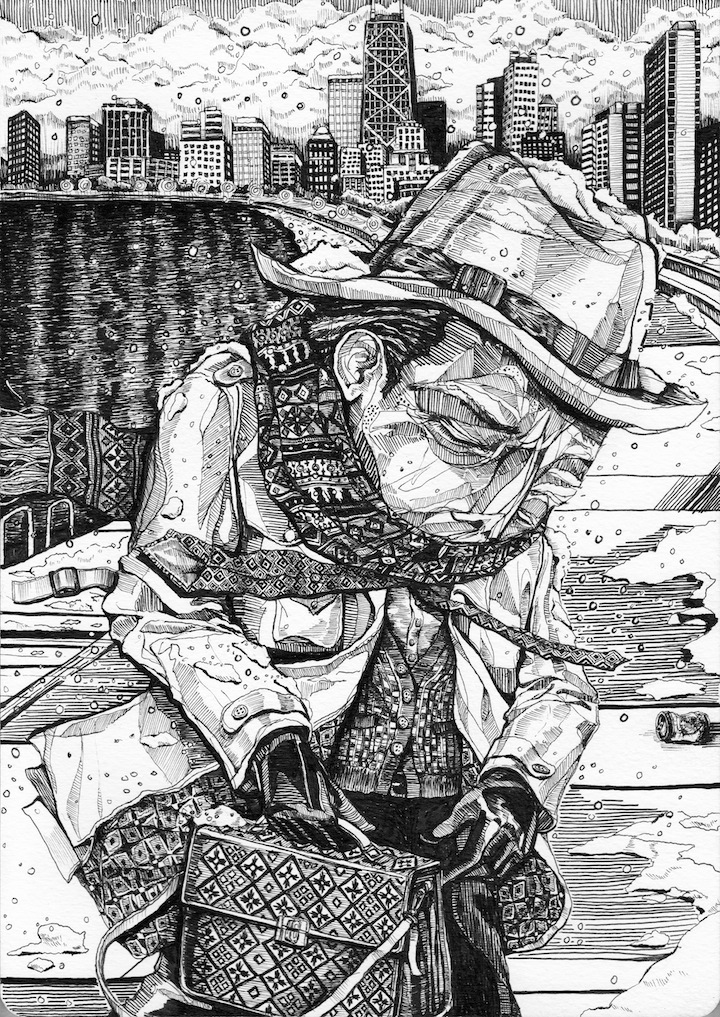
Any favorite artists?
Many. Among them are: Carrie Moyer, Haig Aivazian, Jayson Musson, Trenton Doyle Hancock and Dave McKenzie.
What about those who work in public spaces?
Os Gemeos and Poser aka Pose MSK are among my favorites.
What do you see as the role of the artist in society?
To challenge and to contribute to the collective thought.
What’s ahead?
More art. More income from art. More traveling and, generally, doing what I want to do.
Interview by Lois Stavsky. All photos courtesy of the artist, except the first one at 5Pointz by Lois Stavsky
